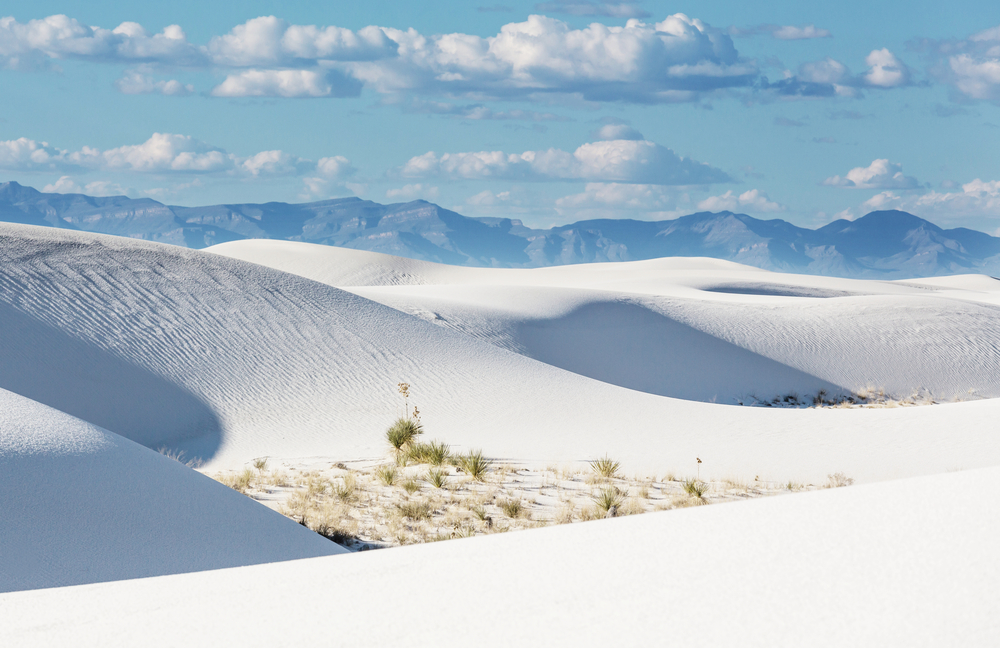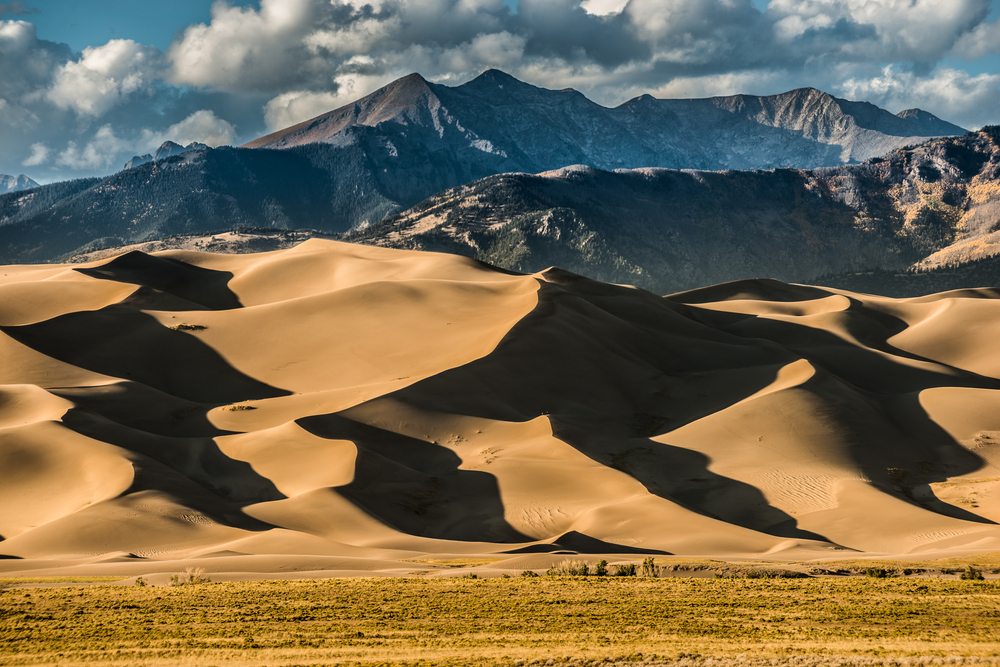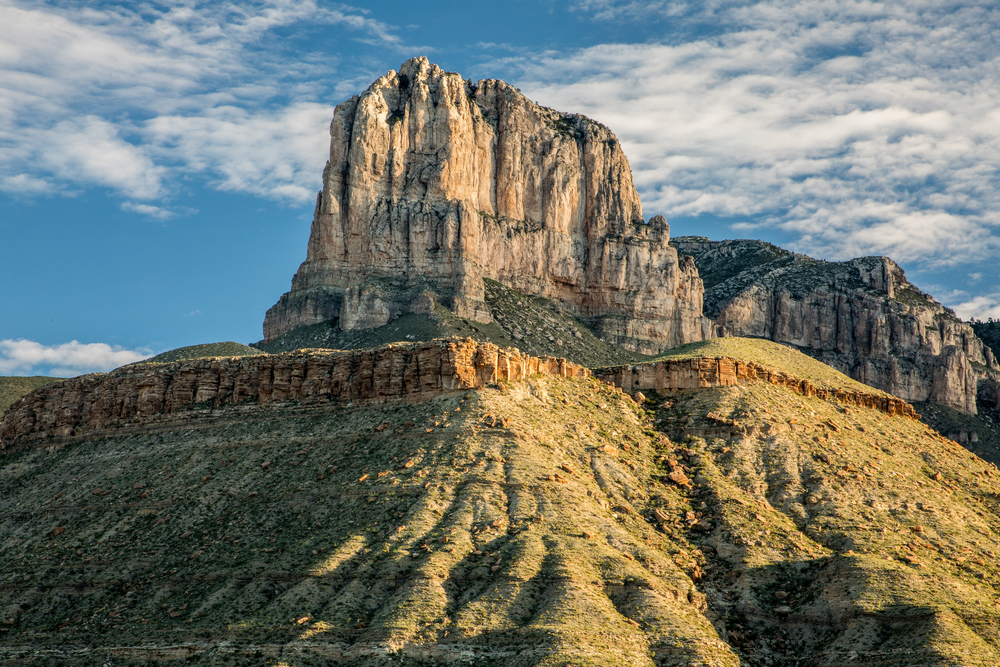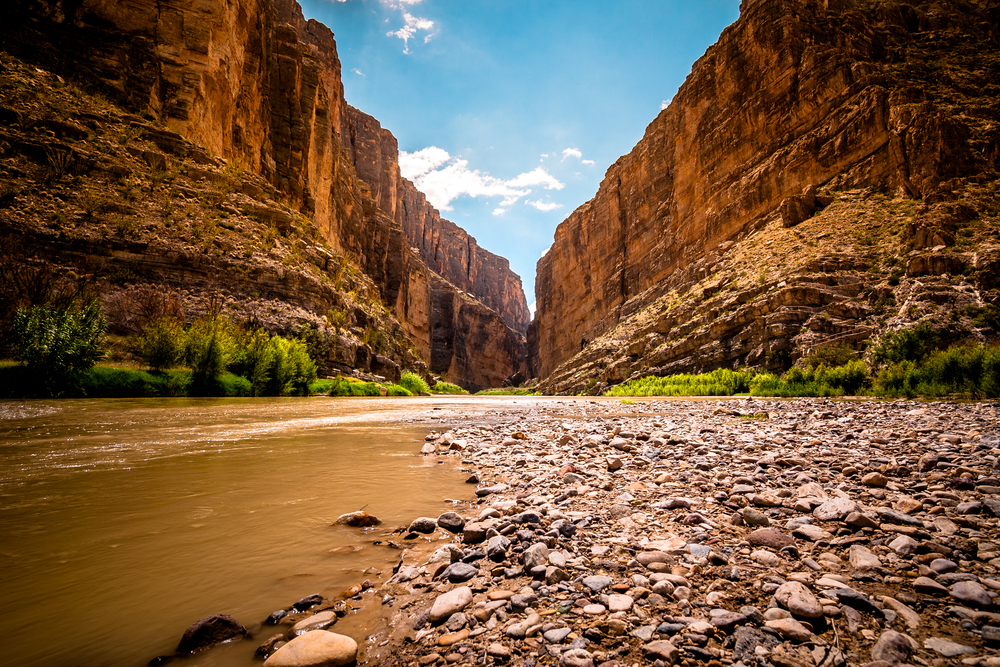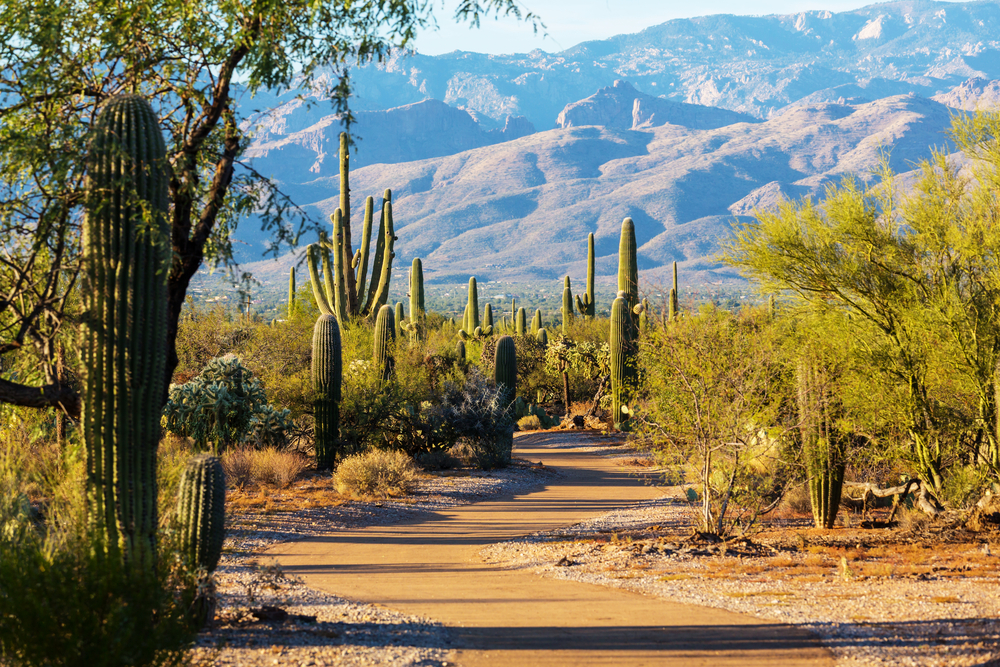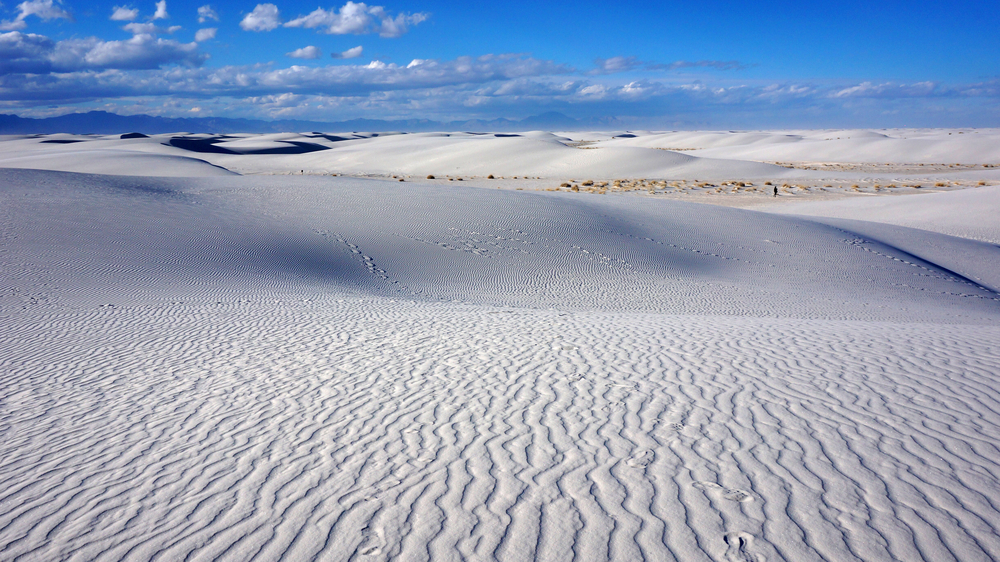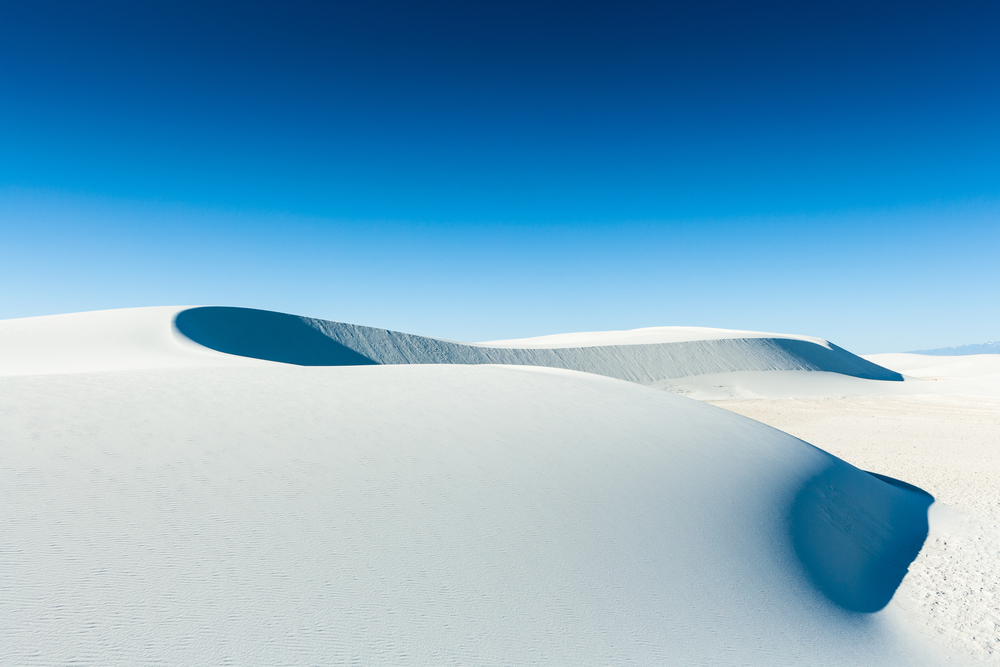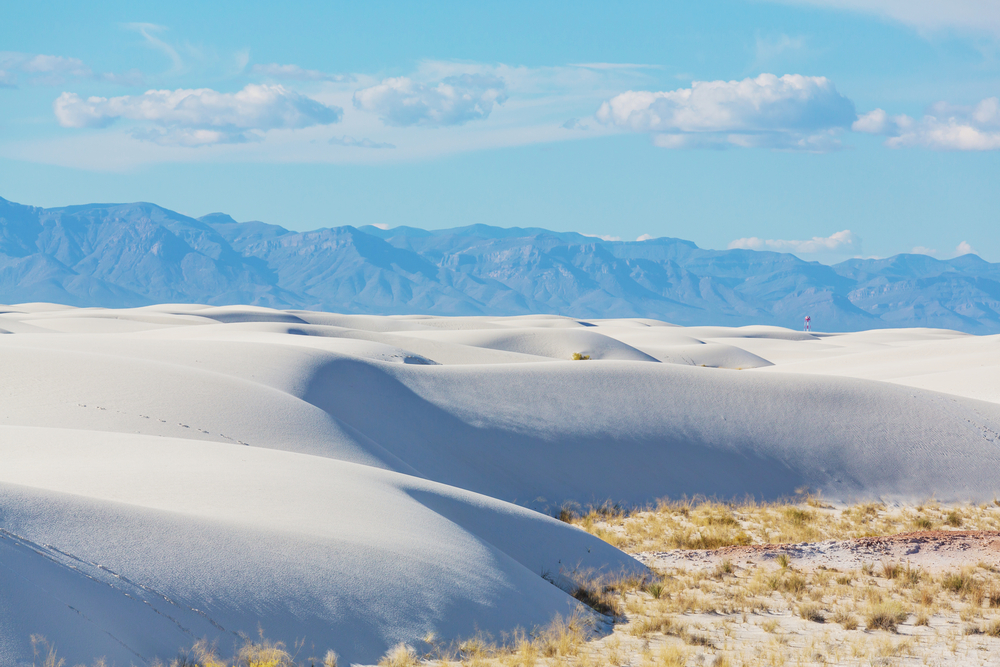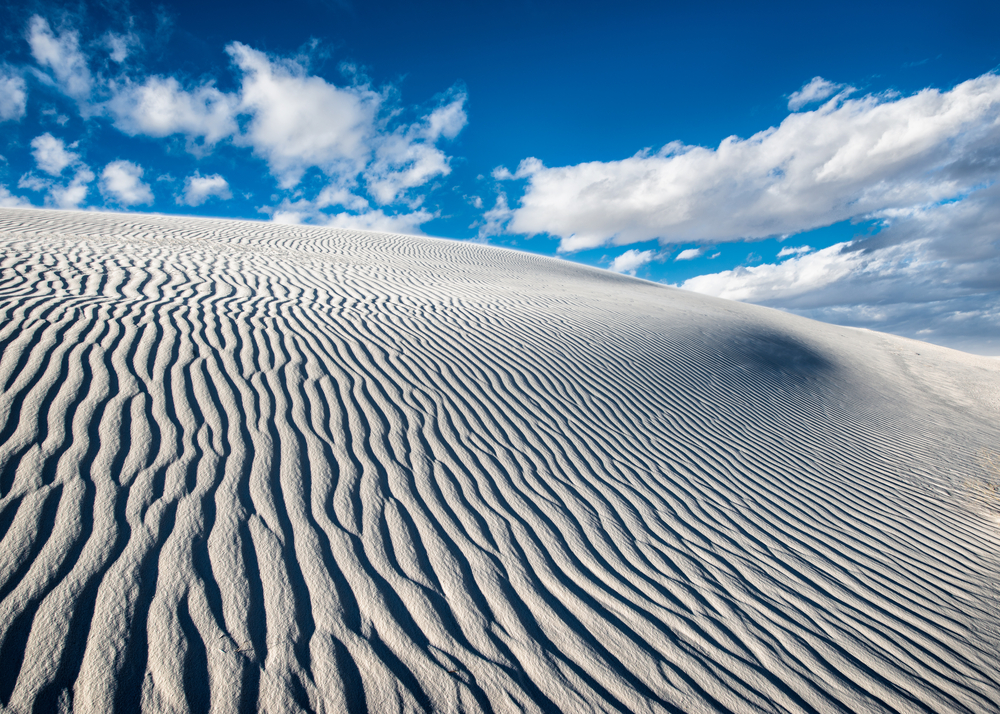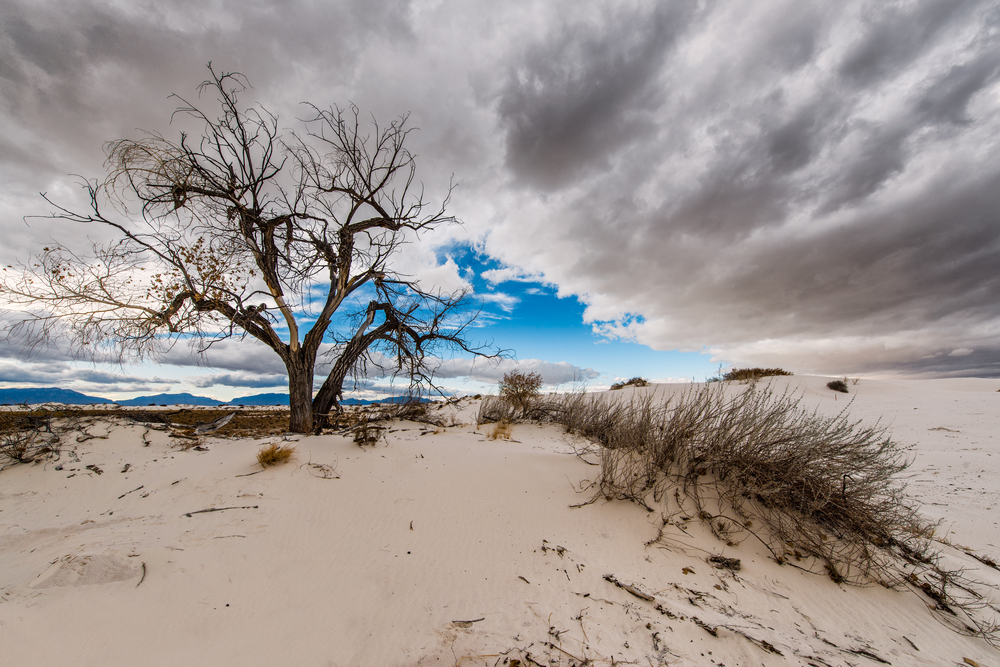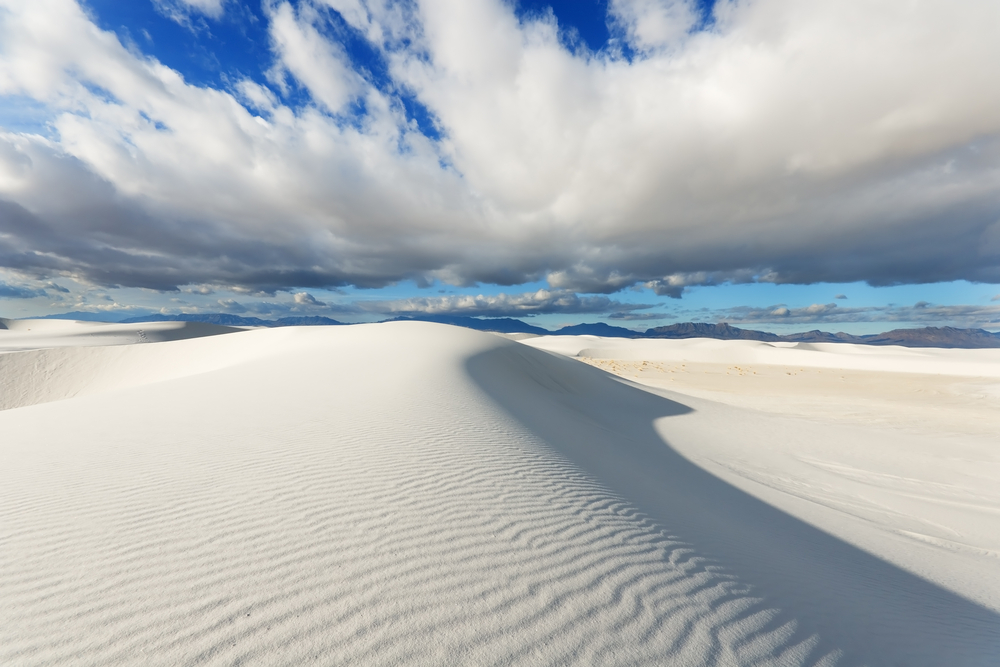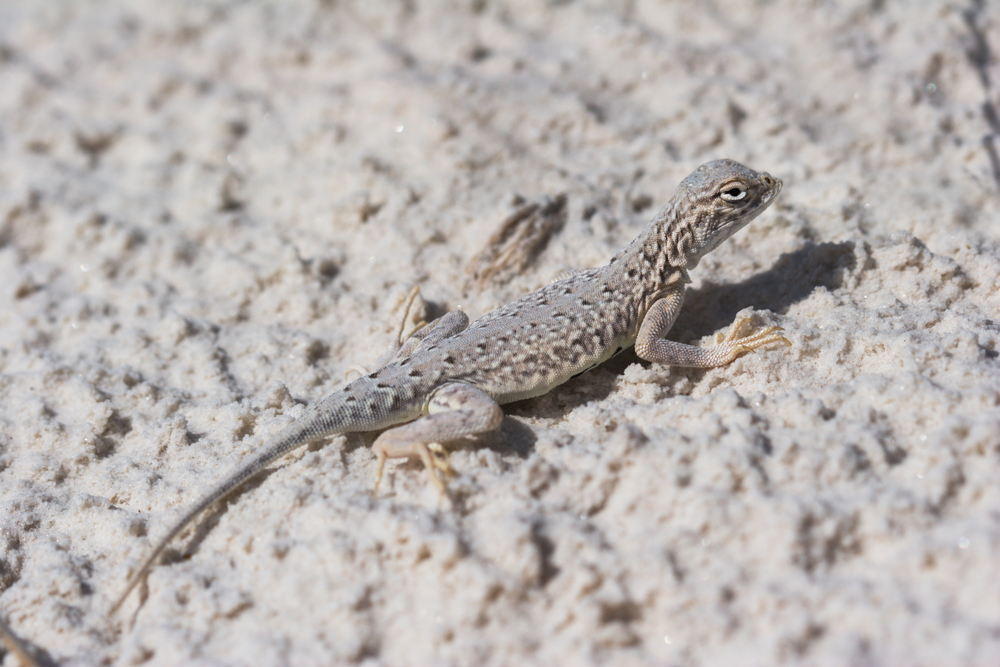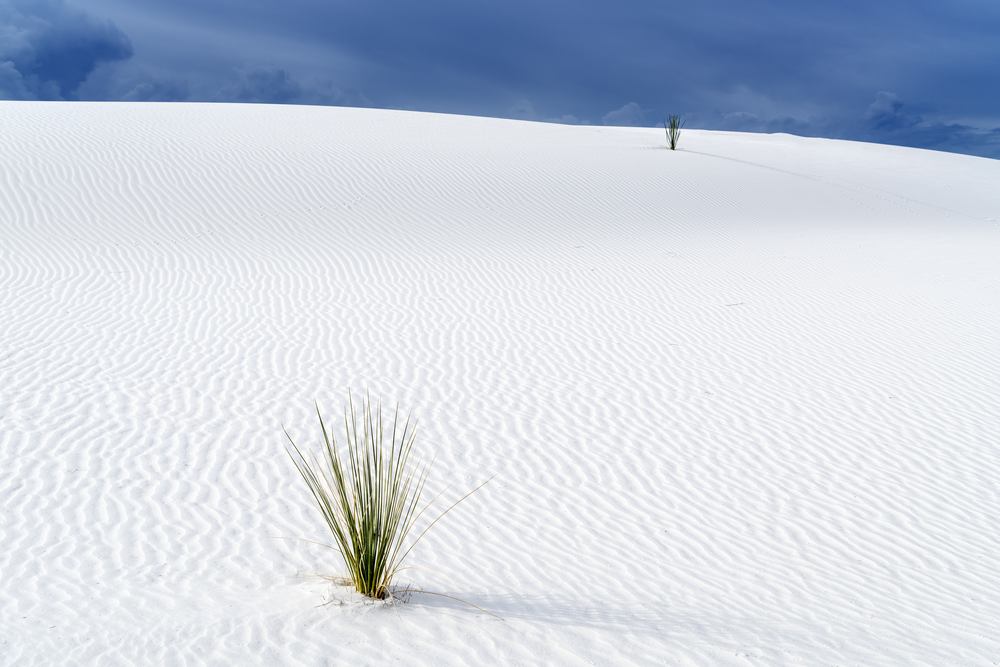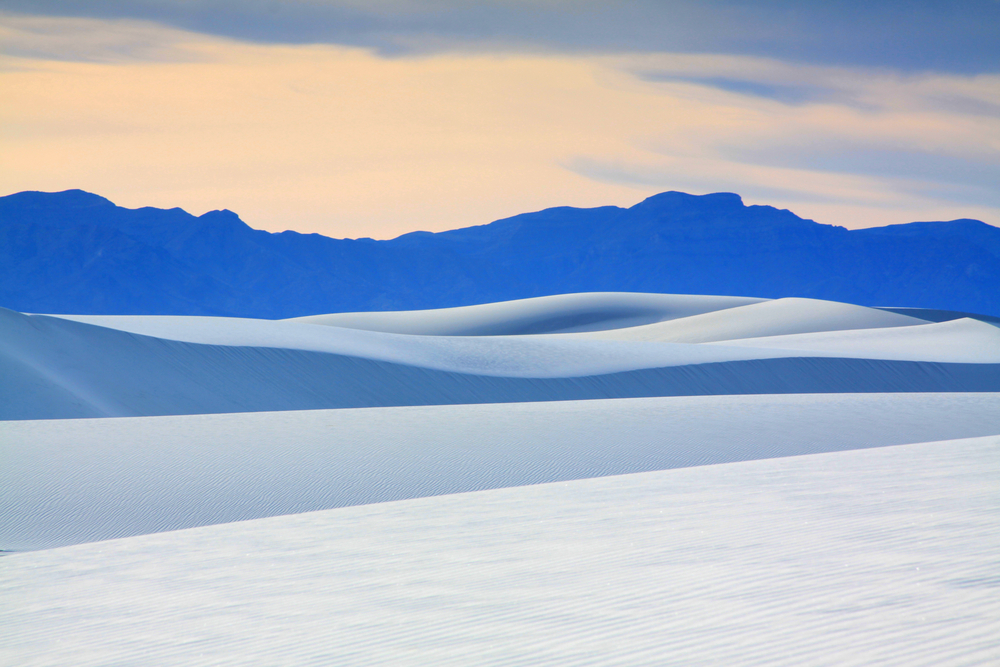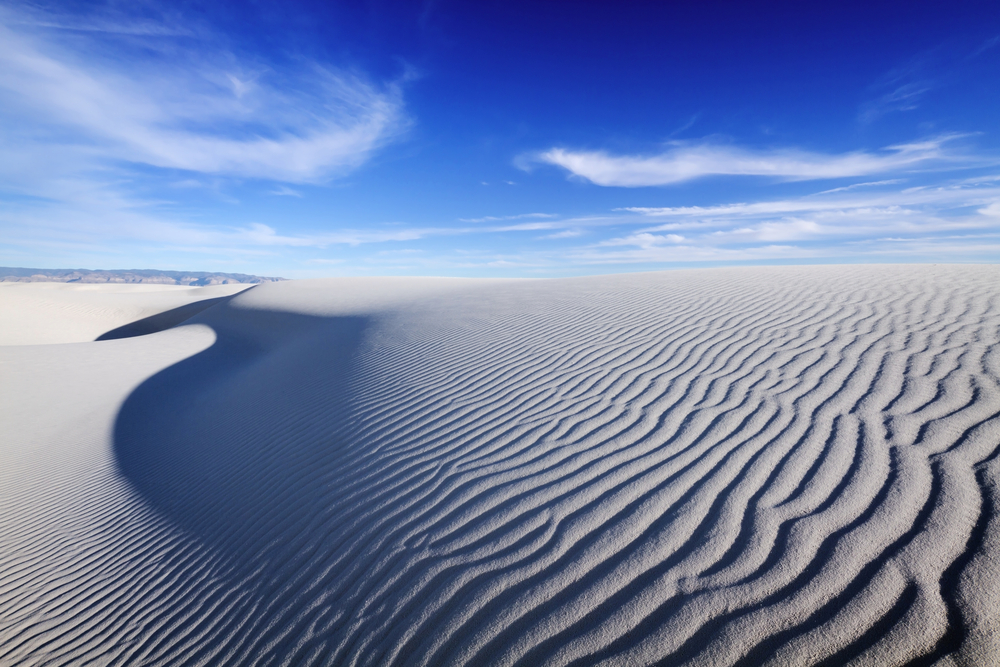White Sands National Park is renowned for its strikingly beautiful landscape of white gypsum sand dunes. Covering over 275 square miles (712 km²) of desert, it is the largest gypsum dune field in the world.
This unique feature forms the heart of the park’s attractions and activities, offering a surreal and otherworldly landscape that captivates visitors.
The gypsum that creates these dunes is a soft mineral that is rarely found in the form of sand because it is soluble in water. However, the unique set of circumstances in the Tularosa Basin traps the gypsum and creates the magnificent white dunes.
Unlike typical desert sand, the gypsum sand does not absorb the sun’s heat, so it remains cool to the touch, even in the heat of summer, making it comfortable for barefoot exploration.
White Sands National Park is known for more than just its beauty; it offers a variety of recreational activities. Visitors can enjoy sledding down the dunes, hiking, photography, picnicking, and star gazing under some of the clearest night skies in the United States.
The park also supports a diverse ecosystem of plants and animals adapted to this extreme environment, including species such as the bleached earless lizard, which are specially adapted to blend into the white sand.
Furthermore, the park has a rich history, from ancient cultures that left behind fossilized footprints to the testing of the first atomic bomb at the nearby Trinity Site. White Sands National Park offers a blend of natural wonder, recreational fun, and historical intrigue, making it a unique and captivating destination for visitors.








































































